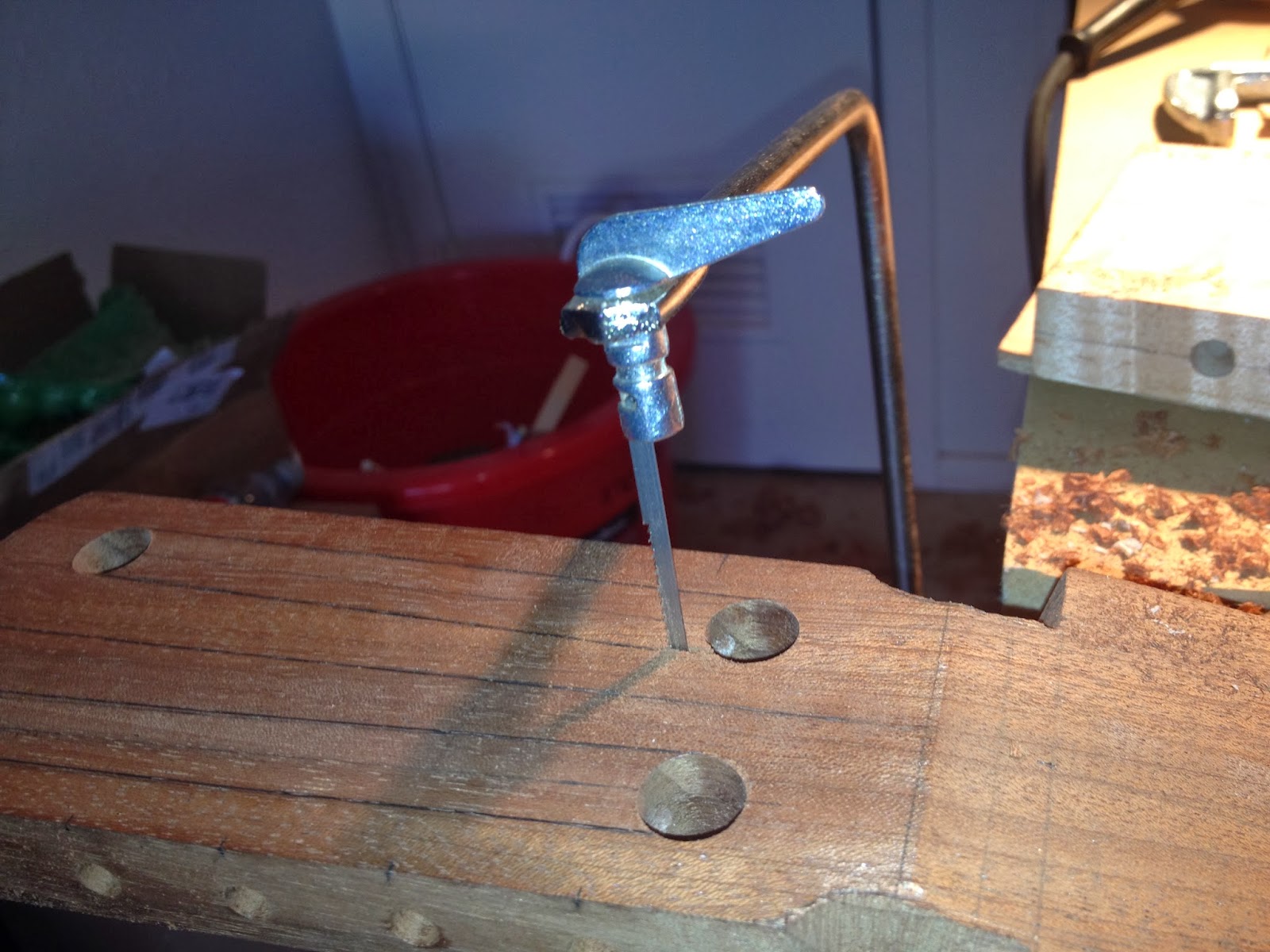I'm starting with the neck because the rest of the instrument is built around the neck. I got the neck blank from StewMac.
http://www.stewmac.com/shop/Bodies,_necks,_wood/Acoustic_guitar_necks/Sipo_Mahogany_Neck_Blanks_for_Classical_Guitar.html
Its Sipo Mahogany, which is supposed to be very similar to "regular" Mahogany which is the traditional wood used for guitar necks.
1 - Scarf joint cut at a 15 degree angle.
2 - Cleaning up joint - I previously had no experience with hand planes so I signed up for a hand tool class in Dallas that taught me how to use and most importantly sharpen planes, chisels and saws.
3. Glueing the joint
4. Final glue joint - This isn't the best joint in the world, I probably could have sanded the two pieces more to get a flatter surface. Hopefully this little gap won't become a problem later on.
5. Glueing the heel block - Yet another reason that I wanted to build in the Spanish style, is the use of a stacked heel block. Steel String necks are generally cut from a single large mahogany block which requires a large band saw. A stacked heel block is thought to be inferior from a craftsmanship perspective on Steel string guitars. However, on classical guitars it's standard. Its weird to me how different "tribes" are snobbish about different things. The neck blank that I bought either wasn't long enough, or I didn't measure very well because it wasn't long enough to make enough sections for the stacked block. So I went to the local lumberyard and bought some maple. So the neck block will be alternating dark (mahogany) and light (maple).
6. Rib (side) slots - In the Spanish method, the sides connect to the neck with thin slots like this:
However, my handsaw use isn't very precise so I messed up the cuts. I then discovered a different method used by many classical builders. Rather than make a thin slot, they make a large slot and then use wedges to hold the sides tight against the neck block.
Here is a good looking example, note that the wedges haven't been trimmed flush yet.
Here is what it should look like after the wedges are trimmed:
And here is what mine looks like. Its not a very pretty cut, but I think once the heel block gets trimmed down, and I clean up the slot with files and sandpaper, it should be fine.
7. Headstock - I'm cutting out the rough shape with a coping saw. I'll clean it up with files and sandpaper.




























